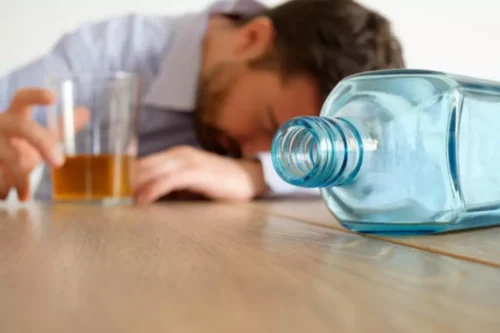
Doctors diagnose alcohol use disorder (AUD) when a person has two or more of the symptoms listed below. The early warning signs of an alcohol problem can be hard to recognize because some symptoms can overlap with what are considered normal teen behaviors. If you think your teen may not feel comfortable talking with you, perhaps guide them toward another trusted adult, such as an aunt, uncle, family friend, or community leader, with whom they have a good relationship. Recognizing AUD in teenagers isn’t always easy, but it can be the first step in offering them the support they need.
- It should not be used in place of the advice of your physician or other qualified healthcare providers.
- Many turn to alcohol to relieve stress, cope with the pressures of school, to deal with major life changes, like a move or divorce, or to self-medicate a mental health issue such as anxiety or depression.
- Alcohol poisoning is the potentially fatal result of drinking excessive amounts of alcohol in a short period.
- Occasional abuse of alcohol during the teenage years can result in addiction as well, if the young drinker becomes dependent on alcohol and develops cravings for it when he or she cannot obtain it.
Alcohol and the Adolescent Brain
Teenagers tend to be bigger risk-takers and are often more emotionally motivated then adults, and alcohol abuse in teens can be tied to these factors. Teens also tend to take the opinions of their peers more seriously than those of adults, and there is considerable evidence that peer-based group counseling is especially helpful for teen drinkers. Teens are also especially like to suffer from co-occurring mental health issues that contribute to their alcohol use.
Age of Onset

Alcohol overdose occurs when there is so much alcohol in the bloodstream that the areas of the brain controlling basic life-support systems—such as breathing, heart rate, and temperature control—begin to shut down. Evaluate whether you recognize any of the following symptoms in yourself. And don’t worry—even if you do identify symptoms, there are steps you can take to reduce the risk of AUD and other alcohol-related consequences. Regardless of the cause of someone’s AUD, it’s important that they receive the treatment and support they need to feel better. However, it’s still a good idea to reach out to them — regardless of the cause of their behavior, they may need guidance and support.
- Parental rules that are perceived by young people as clear and well defined, whether general or specific to alcohol, can help prevent teenage drinking.
- Facts about the societal risk factors for adolescent alcoholism include peer pressure and the portrayal of teen drinking in the media.
- You might remember peer pressure when you were a teen, which is why you want to be proactive in talking with your kid about drinking.
- Boundaries are helpful, so it’s OK to set clear rules and expectations for your child when it comes to drinking.
Residential treatment programs
See the following for information on what to do if someone is having an alcohol overdose (also called “alcohol poisoning”) and for resources to access for a mental health emergency. The scientific literature clearly shows that parental monitoring helps to reduce alcohol consumption by adolescents. Here’s some information to teenage alcoholism help you get ready for your appointment, and what to expect from your health care provider or mental health provider. Many people with alcohol problems and their family members find that participating in support groups is an essential part of coping with the disease, preventing or dealing with relapses, and staying sober.

Preventing Underage Drinking
The extent of alcohol-related activation was greatest for those with the highest levels of monthly alcohol intake (see Figure 1). In contrast, youth with limited drinking histories showed similar levels of activation while viewing the two beverage picture types. These results demonstrated pronounced alcohol cue reactivity in heavy drinking teens, particularly in reaction to alcohol advertising materials.

- Meanwhile, police had earlier said they were searching for a seventh person — also a Vietnamese national — whose name was part of the hotel booking.
- More than a third (37%) of Australian teenagers surveyed had tried zero alcohol products.
- The legal drinking age in the United States is 21, but many teens have access to alcohol much earlier than that.
- When it comes to talking about alcohol consumption with their teenage children, many parents don’t know where to start.

